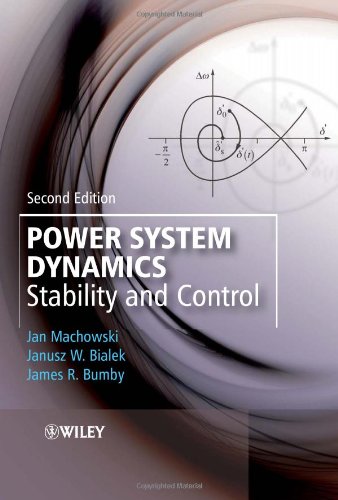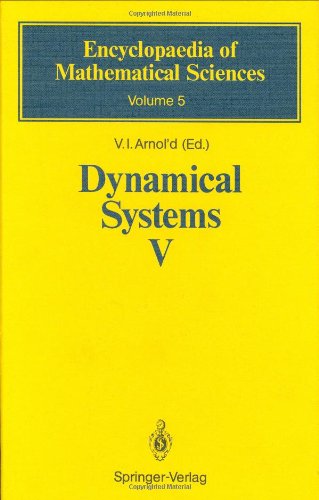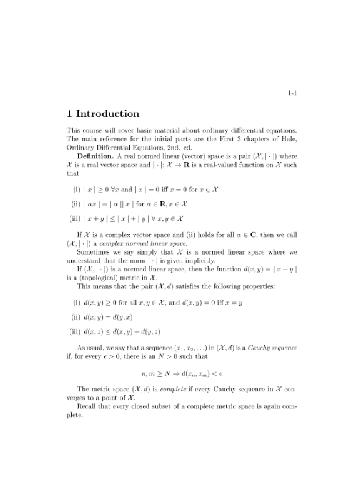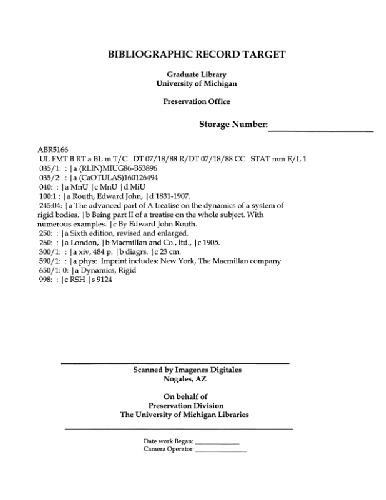Jan Machowski, Janusz Bialek, Dr Jim Bumby0470725583, 9780470725580, 9780470714140
The book continues the successful approach of the first edition by progressing from simplicity to complexity. It places the emphasis first on understanding the underlying physical principles before proceeding to more complex models and algorithms. The reader will appreciate the authors’ accessible approach as the book is illustrated by over 400 diagrams and a large number of examples.
Power System Dynamics: Stability and Control, Second Edition is an essential resource for graduates of electrical engineering. It is also a clear and comprehensive reference text for undergraduate students, and for practising engineers and researchers who are working in electricity companies or in the development of power system technologies.
Table of contents :
POWER SYSTEM
DYNAMICS……Page 4
Contents……Page 8
About the Authors……Page 16
Preface……Page 18
Acknowledgements……Page 22
List of Symbols……Page 24
PART I INTRODUCTION TO POWER SYSTEMS……Page 32
1.1 Stability and Control of a Dynamic System……Page 34
1.2 Classification of Power System Dynamics……Page 36
1.3 Two Pairs of Important Quantities: Reactive Power/Voltage and Real Power/Frequency……Page 38
1.5 Security of a Power System……Page 40
1.6 Brief Historical Overview……Page 43
2.1.1 Reliability of Supply……Page 46
2.2 Structure of the Electrical Power System……Page 47
2.2.2 Transmission……Page 49
2.3 Generating Units……Page 50
2.3.1 Synchronous Generators……Page 51
2.3.2 Exciters and Automatic Voltage Regulators……Page 52
2.3.3 Turbines and their Governing Systems……Page 56
2.5.1 Overhead Lines and Underground Cables……Page 66
2.5.2 Transformers……Page 67
2.5.3 Shunt and Series Elements……Page 72
2.5.4 FACTS Devices……Page 74
2.6.1 Protection of Transmission Lines……Page 85
2.6.2 Protection of Transformers……Page 87
2.6.4 Protection of Generating Units……Page 88
2.7.1 WAMS and WAMPAC Based on GPS Signal……Page 89
2.7.2 Phasors……Page 90
2.7.3 Phasor Measurement Unit……Page 92
2.7.4 Structures of WAMS and WAMPAC……Page 93
3.1 Transmission Lines……Page 96
3.1.1 Line Equations and the • -Equivalent Circuit……Page 97
3.1.2 Performance of the Transmission Line……Page 98
3.2.1 Equivalent Circuit……Page 103
3.2.2 Off-Nominal Transformation Ratio……Page 105
3.3.1 Round-Rotor Machines……Page 107
3.3.2 Salient-Pole Machines……Page 114
3.3.3 Synchronous Generator as a Power Source……Page 120
3.3.4 Reactive Power Capability Curve of a Round-Rotor Generator……Page 122
3.3.5 Voltage –Reactive Power Capability Characteristic V (Q )……Page 126
3.3.6 Including the Equivalent Network Impedance……Page 131
3.4 Power System Loads……Page 135
3.4.1 Lighting and Heating……Page 136
3.4.2 Induction Motors……Page 137
3.4.3 Static Characteristics of the Load……Page 141
3.4.4 Load Models……Page 142
3.5 Network Equations……Page 144
3.6.1 Control of Power Flows……Page 149
3.6.2 Calculation of Power Flows……Page 153
PART II INTRODUCTION TO POWER SYSTEM DYNAMICS……Page 156
4.1 Fundamentals……Page 158
4.2.1 Three-Phase Short Circuit with the Generator on No Load and Winding Resistance Neglected……Page 160
4.2.2 Including the Effect of Winding Resistance……Page 164
4.2.3 Armature Flux Paths and the Equivalent Reactances……Page 165
4.2.4 Generator Electromotive Forces and Equivalent Circuits……Page 171
4.2.5 Short-Circuit Currents with the Generator Initially on No Load……Page 177
4.2.6 Short-Circuit Currents in the Loaded Generator……Page 180
4.2.7 Subtransient Torque……Page 181
4.3 Phase-to-Phase Short Circuit……Page 183
4.3.1 Short-Circuit Current and Flux with Winding Resistance Neglected……Page 184
4.3.2 In •uence of the Subtransient Saliency……Page 187
4.3.3 Positive-and Negative-Sequence Reactances……Page 190
4.3.4 In •uence of Winding Resistance……Page 191
4.3.5 Subtransient Torque……Page 193
4.4 Synchronization……Page 194
4.4.1 Currents and Torques……Page 195
4.5 Short-Circuit in a Network and its Clearing……Page 197
5.1 Swing Equation……Page 200
5.2 Damping Power……Page 203
5.2.1 Damping Power at Large Speed Deviations……Page 206
5.3 Equilibrium Points……Page 207
5.4.1 Pull-Out Power……Page 208
5.4.2 Transient Power –Angle Characteristics……Page 210
5.4.3 Rotor Swings and Equal Area Criterion……Page 215
5.4.4 Effect of Damper Windings……Page 217
5.4.5 Effect of Rotor Flux Linkage Variation……Page 218
5.4.6 Analysis of Rotor Swings Around the Equilibrium Point……Page 222
5.4.7 Mechanical Analogues of the Generator –Infinite Busbar System……Page 226
5.5.1 Steady-State Power –Angle Characteristic of Regulated Generator……Page 227
5.5.2 Transient Power –Angle Characteristic of the Regulated Generator……Page 231
5.5.3 Effect of Rotor Flux Linkage Variation……Page 233
5.5.4 Effect of AVR Action on the Damper Windings……Page 236
5.5.5 Compensating the Negative Damping Components……Page 237
6.1.1 Fault Cleared Without a Change in the Equivalent Network Impedance……Page 238
6.1.2 Short-Circuit Cleared with/without Auto-Reclosing……Page 243
6.1.4 Effect of Flux Decrement……Page 246
6.1.5 Effect of the AVR……Page 247
6.2 Swings in Multi-Machine Systems……Page 251
6.3 Direct Method for Stability Assessment……Page 253
6.3.1 Mathematical Background……Page 254
6.3.2 Energy-Type Lyapunov Function……Page 256
6.3.3 Transient Stability Area……Page 258
6.3.4 Equal Area Criterion……Page 259
6.3.5 Lyapunov Direct Method for a Multi-Machine System……Page 261
6.4 Synchronization……Page 268
6.5 Asynchronous Operation and Resynchronization……Page 270
6.5.1 Transition to Asynchronous Operation……Page 271
6.5.2 Asynchronous Operation……Page 272
6.5.3 Possibility of Resynchronization……Page 273
6.6 Out-of-Step Protection Systems……Page 275
6.6.1 Impedance Loci During Power Swings……Page 276
6.6.2 Power Swing Blocking……Page 279
6.6.3 Pole-Slip Protection of Synchronous Generator……Page 280
6.6.4 Out-of-Step Tripping in a Network……Page 282
6.7.1 The Torsional Natural Frequencies of the Turbine –Generator Rotor……Page 284
6.7.2 Effect of System Faults……Page 290
6.7.3 Subsynchronous Resonance……Page 292
7.1 Wind Turbines……Page 296
7.1.1 Generator Systems……Page 300
7.2 Induction Machine Equivalent Circuit……Page 305
7.3 Induction Generator Coupled to the Grid……Page 308
7.4 Induction Generators with Slightly Increased Speed Range via External Rotor Resistance……Page 311
7.5 Induction Generators with Signi •cantly Increased Speed Range:DFIGs……Page 313
7.5.1 Operation with the Injected Voltage in Phase with the Rotor Current……Page 315
7.5.2 Operation with the Injected Voltage out of Phase with the Rotor Current……Page 317
7.5.3 The DFIG as a Synchronous Generator……Page 318
7.5.4 Control Strategy for a DFIG……Page 320
7.6 Fully Rated Converter Systems:Wide Speed Control……Page 321
7.6.1 Machine-Side Inverter……Page 322
7.6.2 Grid-Side Inverter……Page 323
7.7 Peak Power Tracking of Variable Speed Wind Turbines……Page 324
7.9.1 Fixed-Speed Induction Generators……Page 325
7.10 Influence of Wind Generators on Power System Stability……Page 327
8.1 Network Feasibility……Page 330
8.2.1 The d Q /dV Criterion……Page 336
8.2.2 The dE /dV Criterion……Page 339
8.2.3 The dQ G /d Q L Criterion……Page 340
8.3 Critical Load Demand and Voltage Collapse……Page 341
8.3.1 Effects of Increasing Demand……Page 342
8.3.2 Effect of Network Outages……Page 345
8.3.3 Influence of the Shape of the Load Characteristics……Page 346
8.3.4 Influence of the Voltage Control……Page 348
8.4.1 Voltage Stability and Load Flow……Page 349
8.4.2 Voltage Stability Indices……Page 351
8.5.1 The Dynamics of Voltage Collapse……Page 352
8.5.2 Examples of Power System Blackouts……Page 354
8.5.3 Computer Simulation of Voltage Collapse……Page 357
8.6 Prevention of Voltage Collapse……Page 358
8.7.1 Parametric Resonance in RLC Circuits……Page 360
8.7.2 Self-Excitation of a Generator with Open-Circuited Field Winding……Page 361
8.7.3 Self-Excitation of a Generator with Closed Field Winding……Page 363
8.7.4 Practical Possibility of Self-Excitation……Page 365
9 Frequency Stability and Control……Page 366
9.1.1 Generation Characteristic……Page 367
9.1.2 Primary Control……Page 370
9.1.3 Secondary Control……Page 372
9.1.4 Tertiary Control……Page 376
9.1.5 AGC as a Multi-Level Control……Page 377
9.1.6 Defence Plan Against Frequency Instability……Page 378
9.1.7 Quality Assessment of Frequency Control……Page 380
9.2 Stage I –Rotor Swings in the Generators……Page 381
9.3 Stage II –Frequency Drop……Page 384
9.4 Stage III –Primary Control……Page 385
9.4.1 The Importance of the Spinning Reserve……Page 387
9.4.2 Frequency Collapse……Page 389
9.5 Stage IV –Secondary Control……Page 391
9.5.1 Islanded Systems……Page 392
9.5.2 Interconnected Systems and Tie-Line Oscillations……Page 395
9.6 FACTS Devices in Tie-Lines……Page 401
9.6.1 Incremental Model of a Multi-Machine System……Page 402
9.6.2 State-Variable Control Based on Lyapunov Method……Page 406
9.6.3 Example of Simulation Results……Page 409
9.6.4 Coordination Between AGC and Series FACTS Devices in Tie-Lines……Page 410
10.1 Power System Stabilizers……Page 414
10.1.1 PSS Applied to the Excitation System……Page 415
10.2 Fast Valving……Page 418
10.3 Braking Resistors……Page 422
10.4 Generator Tripping……Page 423
10.4.1 Preventive Tripping……Page 424
10.4.2 Restitutive Tripping……Page 425
10.5.1 Power –Angle Characteristic……Page 426
10.5.2 State-Variable Control……Page 428
10.5.3 Control Based on Local Measurements……Page 431
10.5.4 Examples of Controllable Shunt Elements……Page 435
10.5.5 Generalization to Multi-Machine Systems……Page 437
10.5.6 Example of Simulation Results……Page 445
10.6 Series Compensators……Page 447
10.6.1 State-Variable Control……Page 448
10.6.2 Interpretation Using the Equal Area Criterion……Page 450
10.6.3 Control Strategy Based on the Squared Current……Page 451
10.6.4 Control Based on Other Local Measurements……Page 452
10.7 Unified Power Flow Controller……Page 454
10.7.1 Power –Angle Characteristic……Page 455
10.7.2 State-Variable Control……Page 457
10.7.3 Control Based on Local Measurements……Page 459
10.7.4 Examples of Simulation Results……Page 460
PART III ADVANCED TOPICS IN POWER SYSTEM DYNAMICS……Page 462
11.1 Synchronous Generator……Page 464
11.1.2 The Flux Linkage Equations in the Stator Reference Frame……Page 465
11.1.3 The Flux Linkage Equations in the Rotor Reference Frame……Page 467
11.1.4 Voltage Equations……Page 471
11.1.5 Generator Reactances in Terms of Circuit Quantities……Page 474
11.1.6 Synchronous Generator Equations……Page 477
11.1.7 Synchronous Generator Models……Page 484
11.1.8 Saturation Effects……Page 489
11.2.1 Transducer and Comparator Model……Page 493
11.2.2 Exciters and Regulators……Page 494
11.3 Turbines and Turbine Governors……Page 501
11.3.1 Steam Turbines……Page 502
11.3.2 Hydraulic Turbines……Page 507
11.3.3 Wind Turbines……Page 512
11.4 Dynamic Load Models……Page 516
11.5.2 Series FACTS Devices……Page 519
12.1.1 Eigenvalues and Eigenvectors……Page 522
12.1.2 Diagonalization of a Square Real Matrix……Page 527
12.1.3 Solution of Matrix Differential Equations……Page 531
12.1.4 Modal and Sensitivity Analysis……Page 540
12.1.5 Modal Form of the State Equation with Inputs……Page 543
12.1.6 Nonlinear System……Page 544
12.2 Steady-State Stability of Unregulated System……Page 545
12.2.1 State-Space Equation……Page 546
12.2.2 Simpli •ed Steady-State Stability Conditions……Page 548
12.2.3 Including the Voltage Characteristics of the Loads……Page 552
12.2.4 Transfer Capability of the Network……Page 553
12.3.1 Generator and Network……Page 554
12.3.2 Including Excitation System Model and Voltage Control……Page 556
12.3.4 Examples……Page 559
13 Power System Dynamic Simulation……Page 566
13.1 Numerical Integration Methods……Page 567
13.2 The Partitioned Solution……Page 572
13.2.1 Partial Matrix Inversion……Page 574
13.2.2 Matrix Factorization……Page 578
13.2.3 Newton ’s Method……Page 579
13.2.4 Ways of Avoiding Iterations and Multiple Network Solutions……Page 582
13.3 The Simultaneous Solution Methods……Page 584
13.4 Comparison Between the Methods……Page 585
14.1 Types of Equivalents……Page 588
14.2.1 Elimination of Nodes……Page 590
14.2.2 Aggregation of Nodes Using Dimo ’s Method……Page 593
14.2.3 Aggregation of Nodes Using Zhukov ’s Method……Page 594
14.2.4 Coherency……Page 596
14.3 Aggregation of Generating Units……Page 598
14.4 Equivalent Model of External Subsystem……Page 599
14.5 Coherency Recognition……Page 600
14.6.1 Electrical Interpretation of Zhukov ’s Aggregation……Page 604
14.6.2 Incremental Equivalent Model……Page 606
14.6.3 Modal Interpretation of Exact Coherency……Page 610
14.6.4 Eigenvalues and Eigenvectors of the Equivalent Model……Page 613
14.6.5 Equilibrium Points of the Equivalent Model……Page 620
Appendix……Page 624
References……Page 644
Index……Page 654







Reviews
There are no reviews yet.